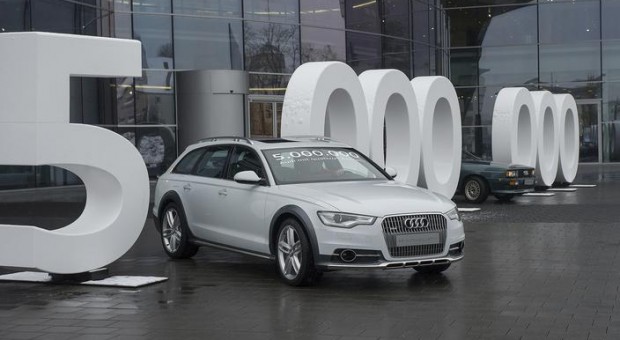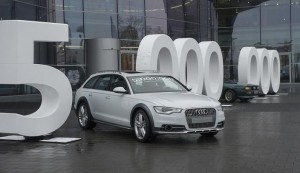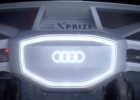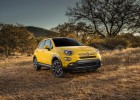
AUDI AG celebrates a very special event today – the five millionth Audi with a quattro drive system. The car is a white Audi A6 allroad 3.0 TDI; it rolled off the assembly line at the Neckarsulm plant.
Five millionth Audi with permanent all-wheel drive rolls off the assembly line
The record is a testament to the leading role played by the pioneering all-wheel drive – no other premium brand in the world can claim such high sales figures for a four-wheel drive or a comparable range of models boasting more than 140 quattro variants.
Audi quattro – the technology
Aside from its model range, Audi offers a very wide variety of car concepts – and quattro technology is equally wide-ranging. There is a custom-designed solution available for each concept.
For the compact A3, Q3 and TT models with transverse-mounted engine, Audi uses a quattro line featuring an electronically controlled multi-plate clutch with hydraulic actuator. It is mounted on the rear axle to ensure the best possible distribution of weight. Under normal conditions, the clutch sends power almost exclusively to the front wheels; if wheel slippage occurs there, it can direct up to 100 percent of the torque to the rear. The new A3 features the latest upgrade of the multi-plate clutch.
The self-locking center differential, which is used in most Audi models with an engine positioned longitudinally along the car’s centerline, is a purely mechanical planetary gear set that diverts torque instantly. Normally it distributes 40 percent of the engine torque to the front axle and 60 percent to the rear; if needed, it can direct the majority of power to the axle with better traction. Torque vectoring perfects the action of the differential at maximum cornering speeds with subtle, selective and pulsing application of the brakes. The Q7 SUV uses a special form of the classic quattro center differential that is integrated into a transfer case.
Audi quattro – the history With the quattro drive, Audi became a pioneer in all-wheel drive systems for passenger cars. The origins can be traced back to the winter of 1976-77, when a group of Audi engineers conducted test drives in the deep snow in Sweden. An Iltis traveled along for comparison purposes – despite its mere 55 kW (75 hp), the leggy all-terrain vehicle easily outdid the much more powerful Audi prototypes with their front-wheel drive systems. A few weeks later a small team of engineers led by Dr. Ferdinand Piëch, then the Audi Board Member for Technical Development, began developing an all-wheel car.
With the quattro drive, Audi became a pioneer in all-wheel drive systems for passenger cars. The origins can be traced back to the winter of 1976-77, when a group of Audi engineers conducted test drives in the deep snow in Sweden. An Iltis traveled along for comparison purposes – despite its mere 55 kW (75 hp), the leggy all-terrain vehicle easily outdid the much more powerful Audi prototypes with their front-wheel drive systems. A few weeks later a small team of engineers led by Dr. Ferdinand Piëch, then the Audi Board Member for Technical Development, began developing an all-wheel car.
Audi’s stroke of genius, which made quattro technology possible in the first place, was the hollow shaft – a drilled-out secondary shaft in the transmission through which power flowed in two directions. It drives the center differential from its rearmost end. The other half of drive torque was transferred to the front axle’s differential along an output shaft rotating inside the hollow secondary shaft. The hollow shaft permitted all-wheel drive that was virtually tension-free, light, compact and efficient, and that operates without the need for a heavy transfer case or second cardan shaft. The quattro principle is especially suitable for sporty cars, which Audi produces at high volumes.
The revolutionary technology celebrated a dazzling debut at the 1980 International Geneva Motor Show in the new Audi quattro, a coupé with a boxy shape and 147 kW (200 hp). Originally planned for only low-volume production, high demand led to success for the original quattro model; repeatedly upgraded, it remained in the model lineup until 1991. In 1984 Audi added the compact Sport quattro with 225 kW (306 hp) and a short wheelbase.
quattro technology debuted in 1980 in the legendary, original quattro car. Adding together all of the available body types, engines and drive systems amounts to more than 140 different models. Audi offers the widest range of cars by far with all-wheel drive: the Audi Q7, R8, A4 allroad, A6 allroad as well as all S and RS models are available exclusively with quattro drives; Audi offers it as an option in all other model lines.
“quattro is one of the key pillars of our brand and has been a critical factor in our successful history,” said Rupert Stadler, Chairman of the Board of Management of AUDI AG. “The quattro permanent all-wheel drive makes it possible to directly experience our ‘Vorsprung durch Technik.’ We are committed to our pioneering role and will continue to develop this advantage with new technologies.”
quattro is more than a technology – it is an icon. The name represents driving safety and sportiness, technical competence and a dynamic attitude that doesn’t let even adverse road conditions hold it back. The success of the quattro models on the road and in motorsport have contributed, as did a legendary series of TV commercials – beginning with the ski jump in Kaipola, Finnland, which the Audi 100 CS quattro climbed in 1986 on its own power.
“quattro” means “Audi,” and “Audi” often means “quattro”: in 2012 more than 43 percent of Audi customers selected a quattro model – a new record. The Audi Q5 tops the list with about 205,600 units. But it’s not just SUV drivers who rely on the all-wheel drive from the carmaker with the four rings: nearly one in four customers for the other model lines selected a quattro drive in 2012. The quattro models sell particularly well in the United States, Canada, Russia and in the markets of the Middle East. Statistics for 2012 show around 99,800 new registrations for all-wheel drive Audi models in Germany as well – considerably more than the company’s competitors.
The quattro is especially important for the Neckarsulm site, where the record-setting car rolled off of the assembly line: more than one of every two cars Audi produces there features all-wheel drive.




















